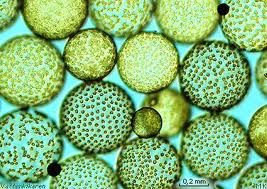of Protists:
- Eukaryotic
- Most unicellular, some multicellular
- Some have a cell wall, some do not
- Some are motile, some are not

- Some have pigments, some do not
- Many different feeding methods (phototrophic, heterotrophic, etc.)
- Most aerobic
- No complex sex organs – no embryos
- Lack specialized features of fungi, animals and plants
Classifying Protists:
Three groups, based on their type of nutrition
- Animal-like Protists (Protozoa)
- Heterotrophs that ingest or absorb their food
- Plant-like Protists (Algae)
- Autotrophs that carry out photosynthesis
- Fungus-like Protists (Slime Moulds and Water Moulds)
- Also Heterotrophs
